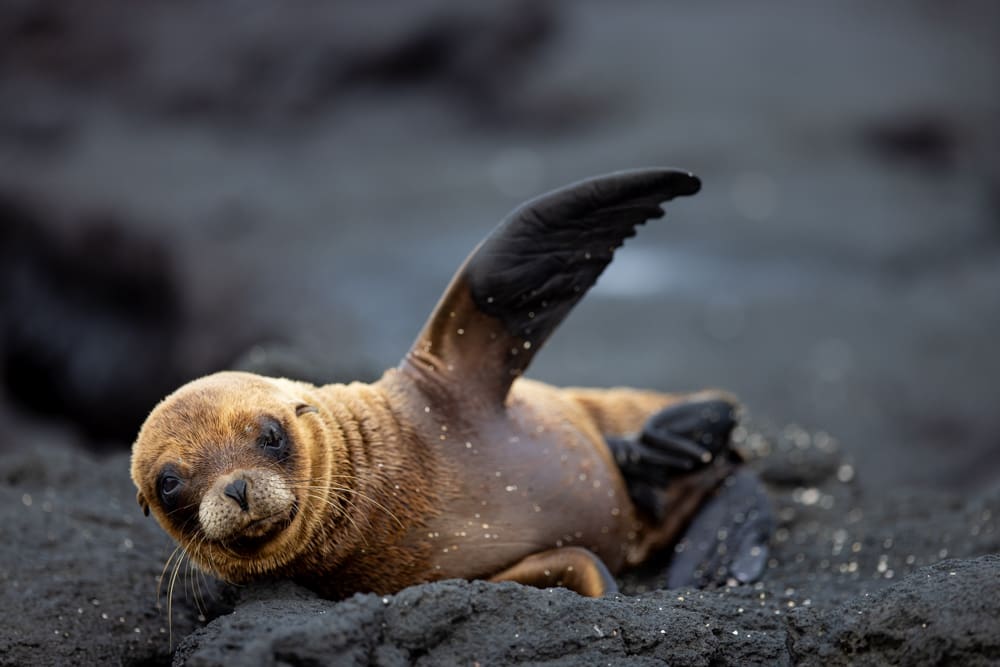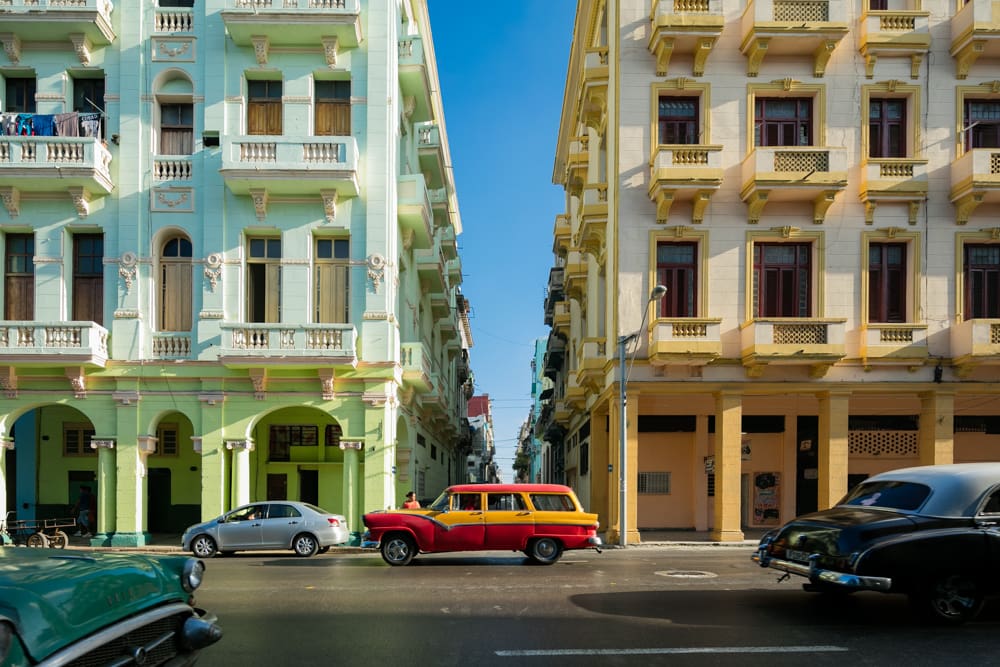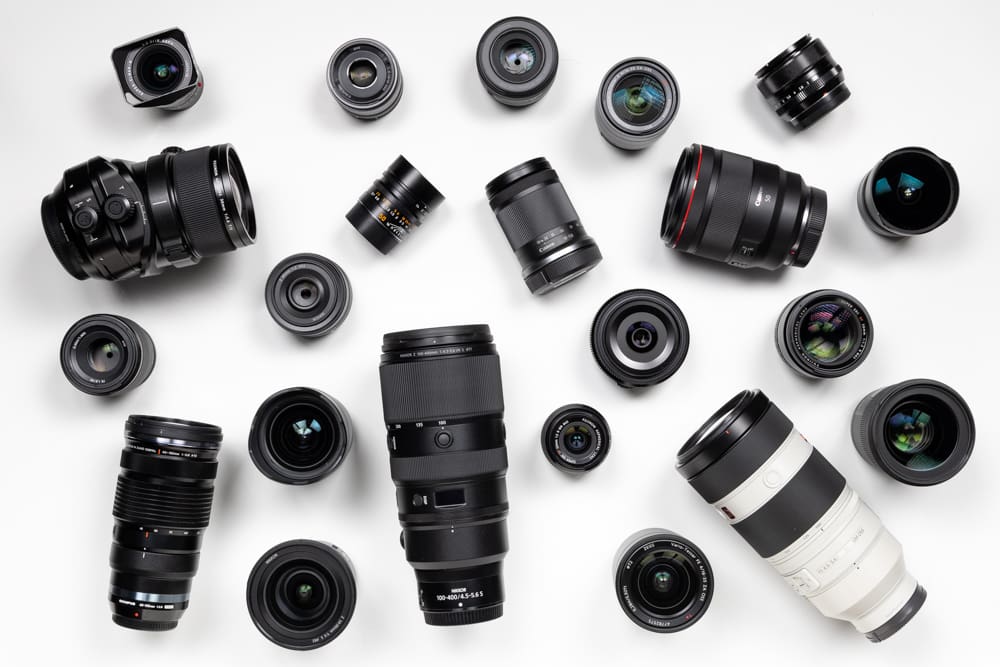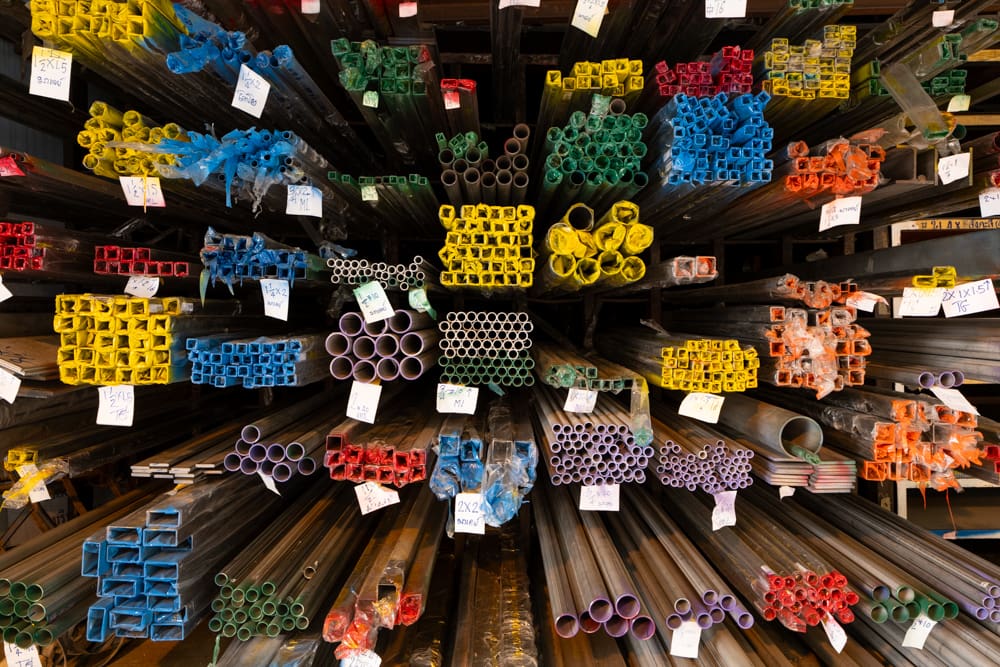For the travel photographer there’s a lot of great content when you look across the vast array of locations, people, and cultures from around the world. From all my years of travel, there is perhaps not a single, repeatable, predictable event that is as photogenic as Bhutan’s Tshechu festivals.
In each of Bhutan’s 20 districts the community gathers once a year for a festival that includes dancing, music, performances, and religious offerings. The loud and chaotic visual spectacle is well attended by the local residents, and if scheduled right, very few tourists. It’s the largest and most significant event of the year for the communities of Bhutan.
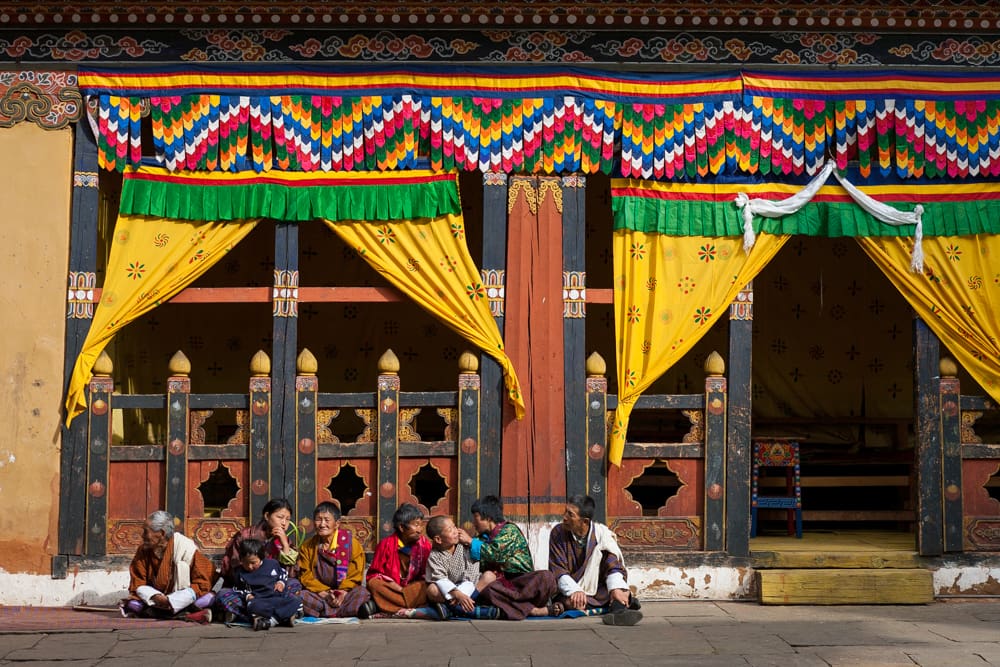
Canon EOS 5D, EF 24-70MM F/2.8 L USM @ 70MM | F/4 | 1/640 SEC | ISO 200
For the traveling photographer, a visit to Bhutan is a wonderful trip in its own right, but timing your journey with a Tshechu makes it unforgettable. No matter what your style or interest in photography is, the festival will provide ample options for a variety of photographic opportunities.
A photographer’s point of view
There’s lots to boast about when it comes to photographing a Tshechu, let’s start with the venue. Many Tshechu’s are held at the large Dzongs or fortified monasteries throughout the country. These ancient structures, dating back centuries in many cases, are visually striking.
The layout of each Dzong is different, but each follows a similar style of tall white walls, walkways, courtyards, and surrounding rooms. The painting and trim work is a masterpiecein its own right. Make sure you give yourself some time outside of the Tshechu to explore a Dzong to practice your photography of architecture and detail work.
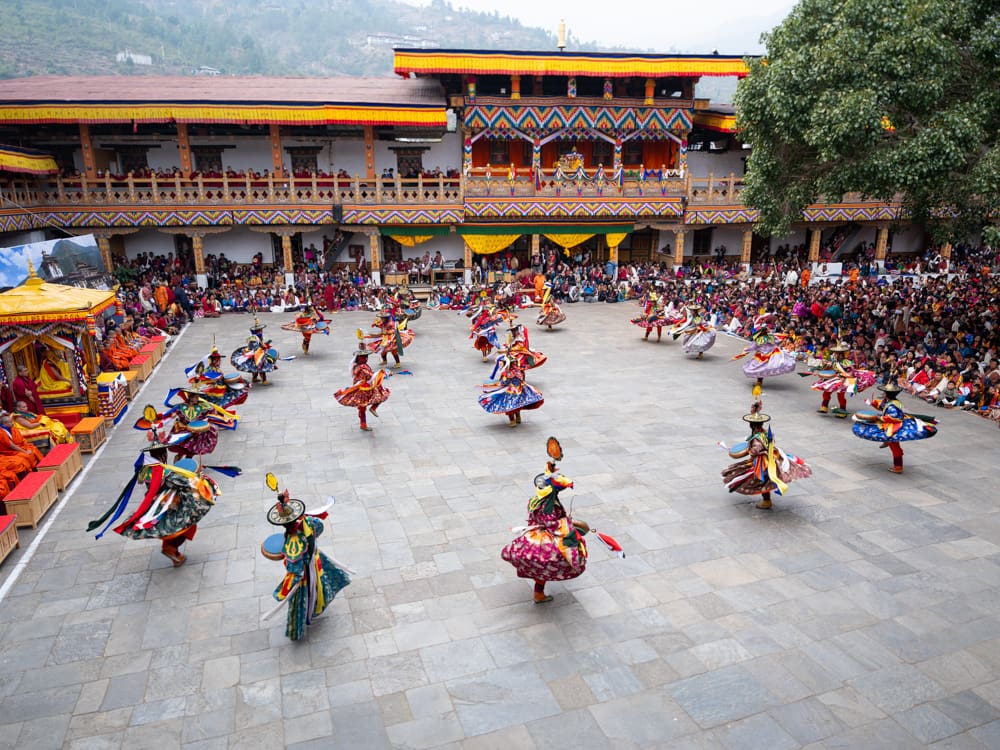
Fujifilm GFX100 II, GF 30MM F/5.6 T/S @ 30MM | F/5.6 | 1/320 SEC | ISO 400
Most Tshechu’s will last multiple days which will give photographers ample opportunity to try different view points, lenses, and techniques. With my latest visit to Bhutan I shot most of the first day from the balcony, getting wide shots of the inner courtyard and clean shots of dancers from above.
My point of view from the second day was from the floor where the organizers had set aside a corner of the courtyard for tourists; providing us with a front row experience. For some of my shots I used the flip out screen on my camera to position it low to the ground to provide a more dynamic point of view.

Fujifilm GFX100 II, GF 110MM F/2 R LM WR @ 110MM | F/2 | 1/640 SEC | ISO 80
Lens choice
Which lens to shoot a Tshechu with is a matter of perspective and desire. Most would do well with the standard 24-70mm and a 70-200mm, for full-frame systems. A maximum aperture of f/4 will do for most, but the faster f/2.8 lenses will gather more light to facilitate faster shutter speeds which is needed for fast moving dancers.
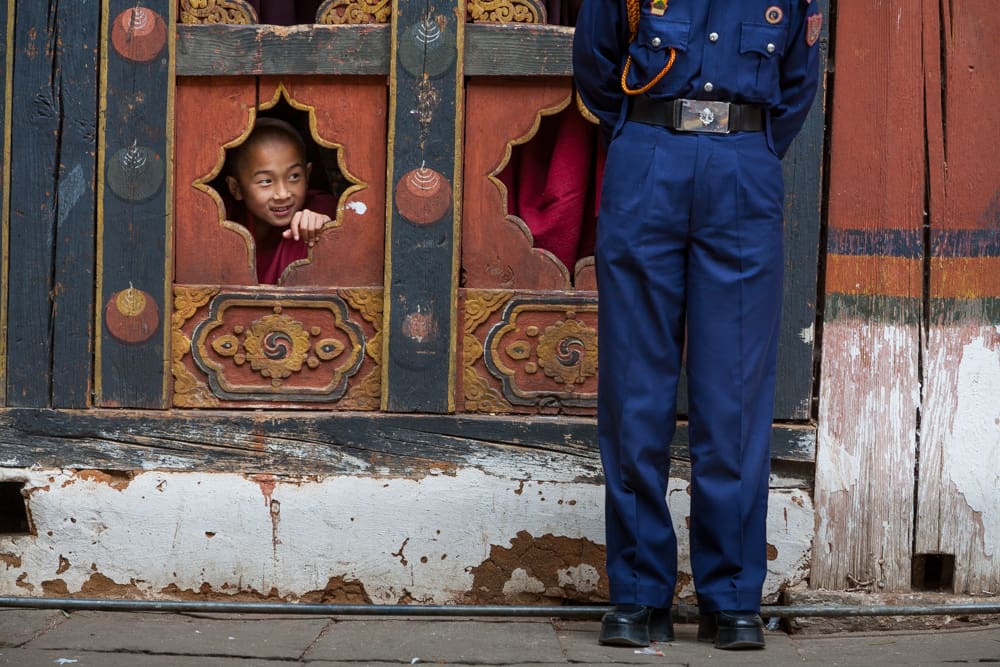
Canon EOS 5D, EF 70-200MM F/2.8 L IS USM + 1.4x TC @ 280MM | F/5.6 | 1/80 SEC | ISO 200
With a large, dynamic scene filled with near-infinite detail, every lens has possibilities; ultra-wide, macro, and fisheye could all be used with the right mindset and eye.
To try something a little different, on my latest trip I tried using a couple of tilt-shift lenses to capture the event. As I’ve mentioned in previous articles about traveling with medium format, I shot with Fujifilm’s 30mm and 110mm TS lenses at the event. I used the lenses to maximize and minimize the depth-of-field and to create panoramas showcasing the whole courtyard.
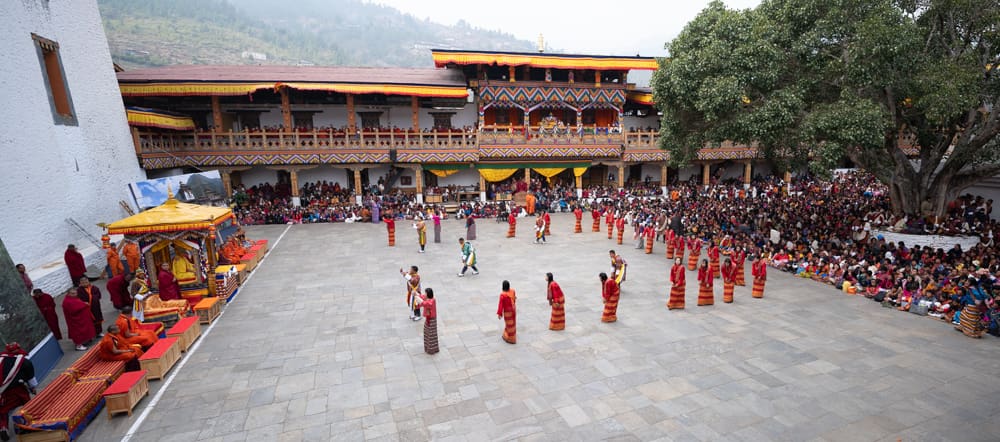
Fujifilm GFX100 II, GF 30MM F/5.6 T/S @ 30MM | F/8 | 1/200 SEC | ISO 400
[3 shot Panorama: Shift left, No Shift, Shift Right]
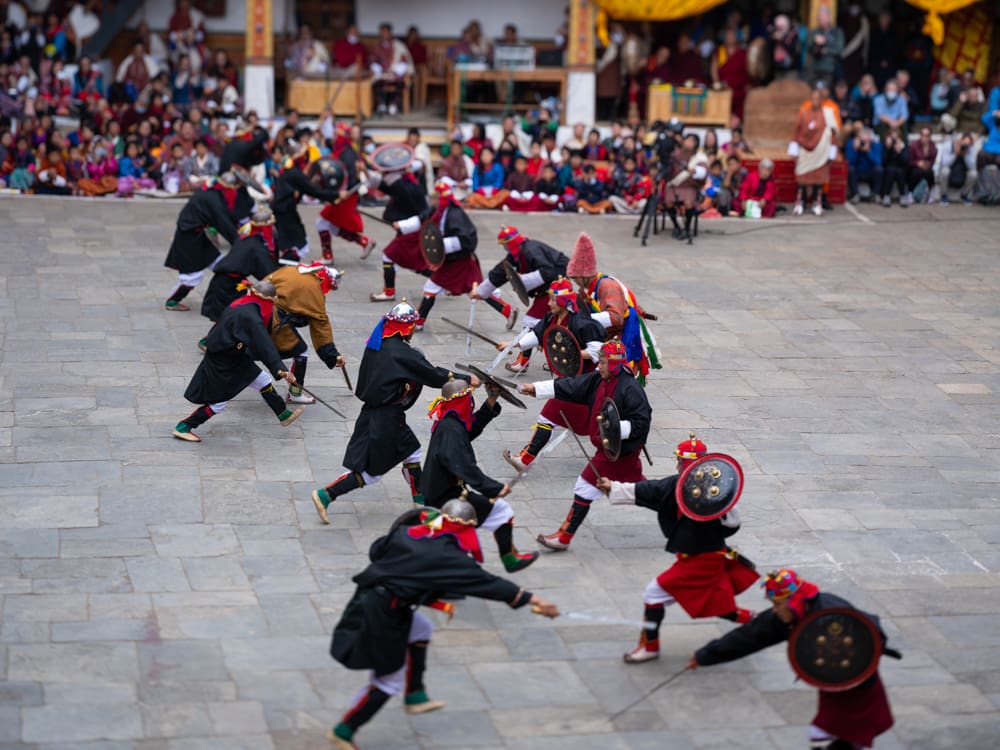
Fujifilm GFX100 II, GF 110MM F/5.6 T/S Macro @ 110MM | F/5.6 | 1/320 SEC | ISO 400
[One shot: Tilt Up]
The most valuable lens, at least for my latest visit was the Fujifilm GF 110mm f/2. The short and fast telephoto works out to be the full-frame equivalent of an 87mm f/1.6. The short telephoto focal length was perfect for my front row courtyard point of view; I could isolate a single dancer midway across the floor or a group of performers at the other end of the arena. The fast f/2 aperture allowed for fast shutter speeds (1/500 to 1/2000) while keeping my ISO reasonably low (ISO 80 to 400). The fast aperture allowed me to shoot with very shallow depth-of-field which helped separate my subject from the often visually cluttered background.
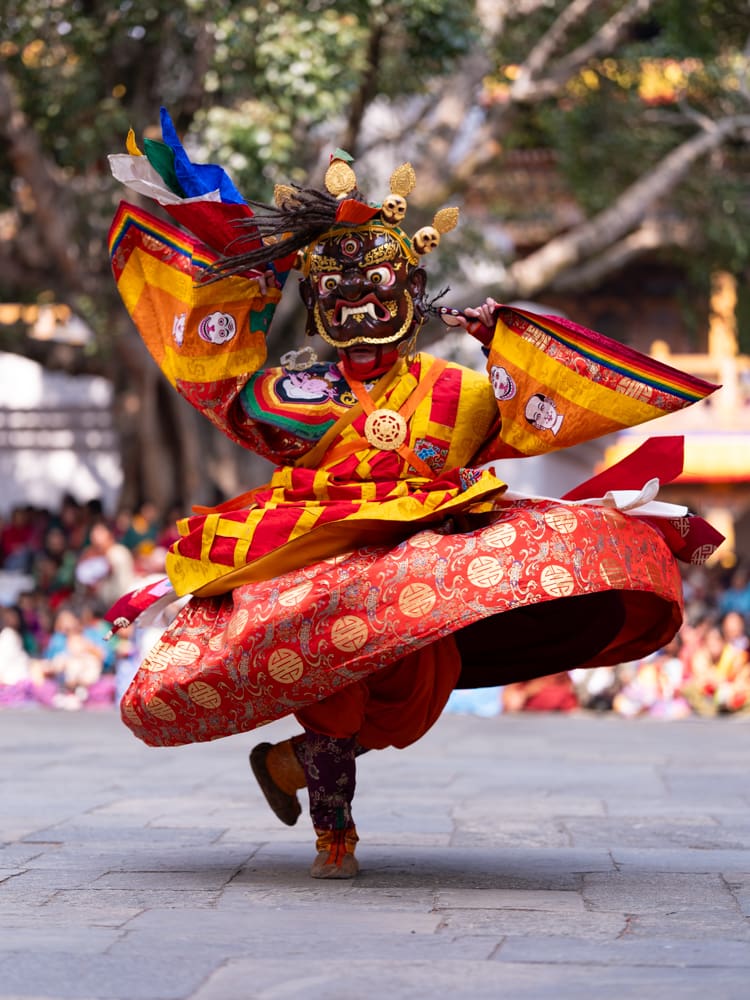
Fujifilm GFX100 II, GF 110MM F/2 R LM WR @ 110MM | F/2 | 1/2500 SEC | ISO 400
Subject detection not so hot
With my day job being an instructor that teaches about cameras I was curious to see how subject detection might work on these costumed performers. In short, it didn’t go so well, but I don’t put much blame on Fujifilm for this one.
Subject detection with an emphasis on detecting faces isn’t going to go well when the performers are frequently in masks. The elaborate and detailed costumes would sometimes fool the detection systems into tracking the colorfully ornate jacket rather than the face. Some of the performers’ intricate hats would also attract and fool the detection system.
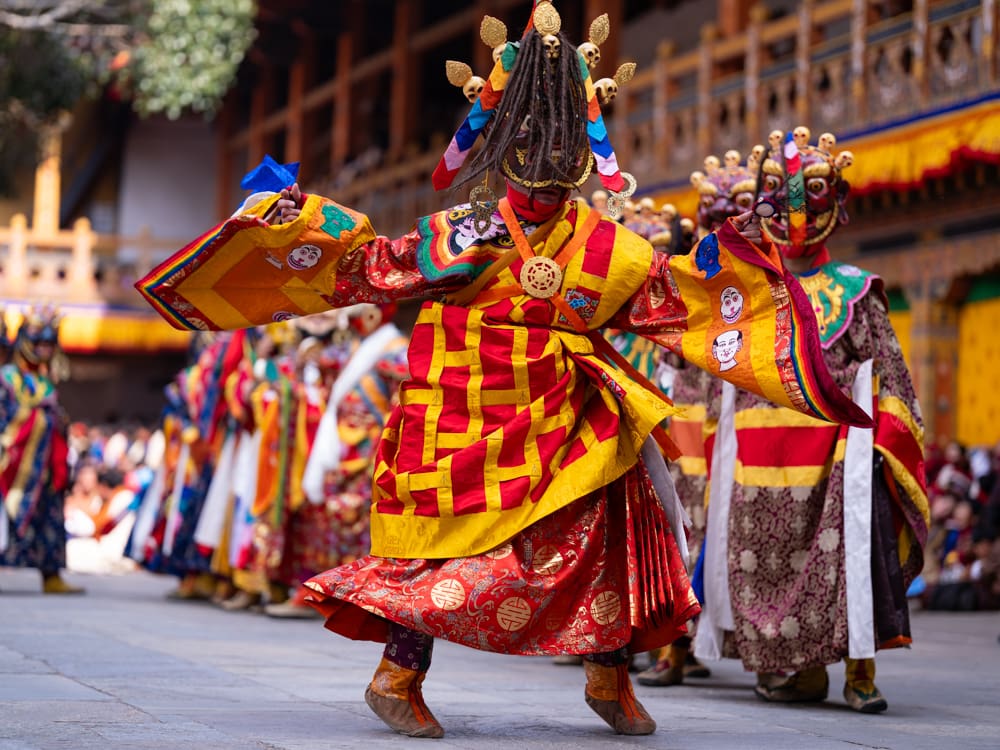
Fujifilm GFX100 II, GF 110MM F/2 R LM WR @ 110MM | F/2 | 1/2500 SEC | ISO 400
After playing around with the various focus tracking options, I reverted back to the medium-sized box and manually placed the focus box where I wanted my subject in the frame. The continuous AF system (AF-C) of the GFX-100 II did an admirable job of keeping the AF locked on my chosen target the vast majority of the time.
Try something different
With all day to shoot a Tshechu, and sometimes multiple days, there’s more than enough time to capture traditionally sharp images. Once you have your fill of tack sharp photos you may want to try using slow shutter speeds to capture the flow of action with a bit of creative chaos.
With dancers and performers moving quickly my preference for a shutter speed around 1/1000 is great for freezing the movement. To capture an interesting slow blur there are several factors to consider, but the key is getting the shutter speed right for the action you are focusing on.
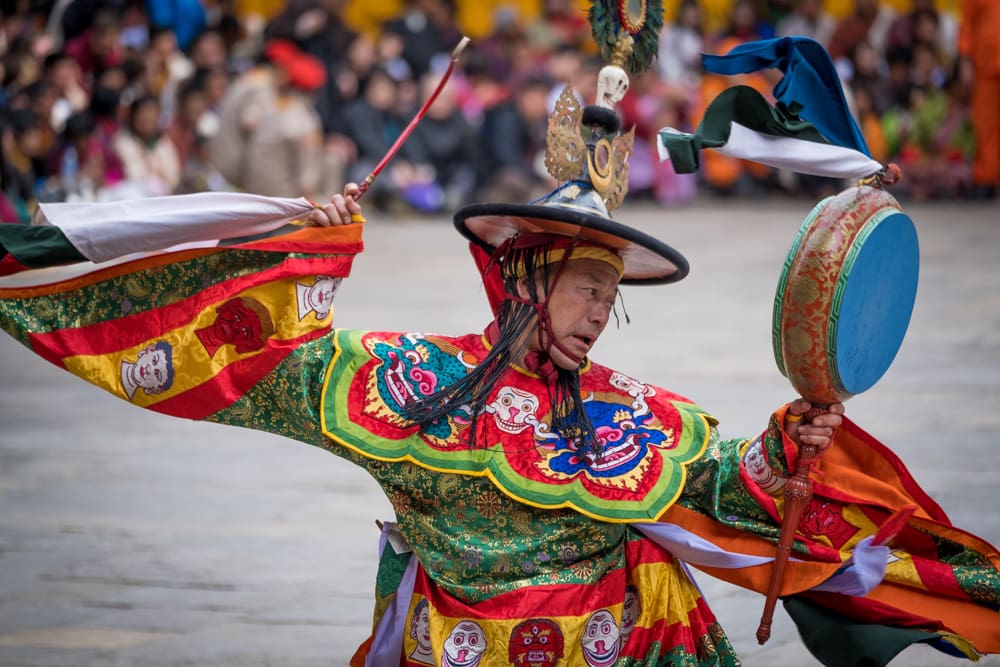
Fujifilm X-T3, XF 50-140MM F/2.8 R LM OIS WR @ 140MM | F/2.8 | 1/1000 SEC | ISO 320
Generally speaking, a shutter speed from 1/30 down to 1/4 of a second will give you a nice blur of either a subject moving or you adding in a little of your own with movement of the camera. The conundrum of the slower shutter speeds is that the slower you go the more interesting the images become, but also the more difficult it is to obtain quality results.
My basic advice is to start at around 1/30 of a second and shoot a lot with that setting to get a good idea of what it will do. Then step down to 1/15 and shoot a lot with it to get a good comparison between it and your earlier 1/30 setting. If you are getting some good results you can then proceed down to 1/8, or more if you dare.
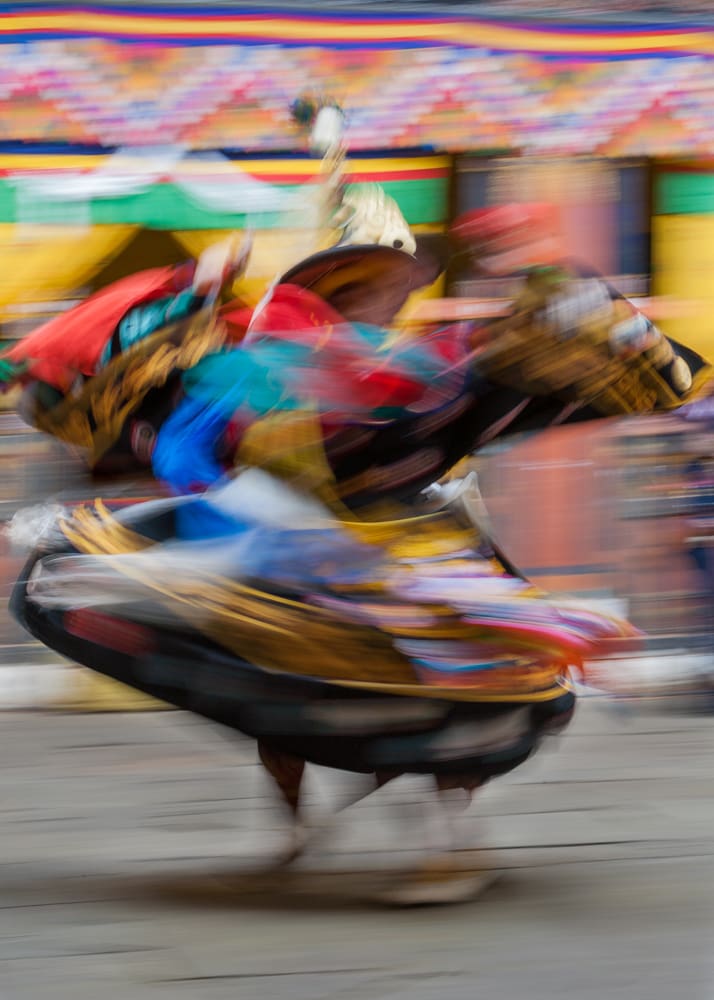
Canon EOS 5D, EF 70-200MM F/2.8 L IS USM @ 78MM | F/16 | 1/13 SEC | ISO 200
Be advised that a low success rate is very common in trying to capture an intentional blur. We have the highest of hopes each time we press the shutter, but we don’t have control over what is happening with our subjects and visual chaos is often the result.
It’s hard to put into words what makes a good blur shot, but like most photos, it should have a sense of subject and be free of distractions. A good blur image will often have a good flow, sense of direction or feel to it. Mostly you’ll know it’s right when you see it.
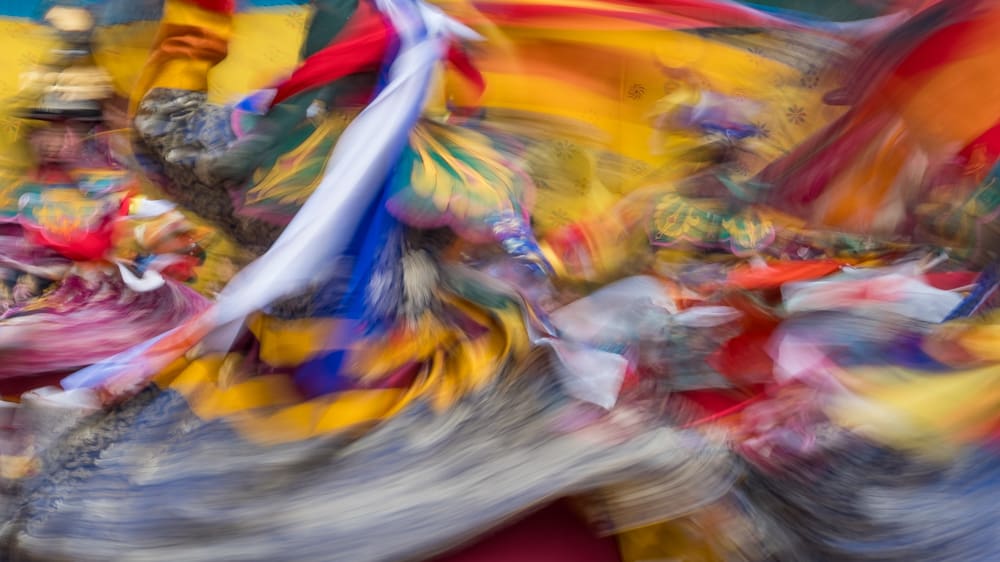
Fujifilm X-T3, XF 50-140MM F/2.8 R LM OIS WR @ 95MM | F/16 | 1/8 SEC | ISO 80
Your opportunity
The world is a marvelous place and there are infinite subjects and events to photograph. When you start looking at things from a photographers point of view, and that of practicality, you begin to realize how rare a true photographic spectacle is, especially if it’s something you want to put on the schedule and plan for.
The Tshechu’s of Bhutan are certainly near the top of every traveler’s most photogenic events. It’s a long flight to Bhutan for most of us and there’s a few hoops to jump through to obtain a visa. But if you make the journey, the Tshechu is a slam dunk.
Yes, I am leading a tour to Bhutan in early 2025, and as of now, there are still spots available if you are interested. Head on over to the Majestic Bhutan 2025 page to read more about it. Don’t miss this opportunity to go; currently there’s no plans for a Bhutan tour in 2026. The world is in constant change and you should always take advantage of opportunities when they present themselves at the right time.
Become part of John’s inner circle
Sign up for the newsletter here — it’s free.
Want to become a better photographer?
Check out John’s selection of photography and camera classes here.
